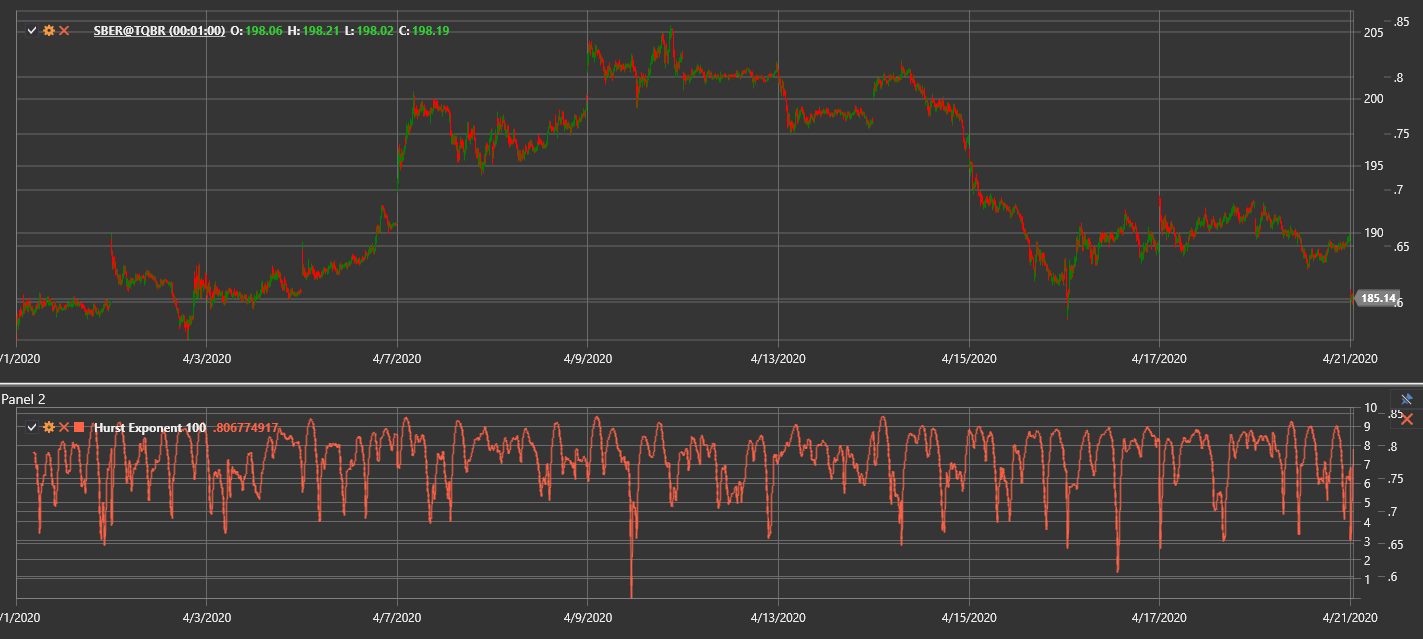HurstExponent
Hurst Exponent is a statistical measure used to evaluate the tendency of a time series to either trend or revert to the mean.
To use the indicator, you need to use the HurstExponent class.
Description
The Hurst exponent (H) ranges between 0 and 1 and describes the long-term memory of a series:
- H > 0.5 indicates persistent trending behaviour.
- H < 0.5 shows a tendency toward mean reversion.
- H ≈ 0.5 corresponds to a random walk.
It can help estimate market efficiency and reveal emerging cycles or trends.
Parameters
- Length – the number of bars used in the calculation.
Calculation
A common method is based on the rescaled range (R/S) approach:
- For each window of
Lengthpoints, compute cumulative deviations from the mean. - Find the range
Ras the difference between maximum and minimum cumulative deviation. - Calculate the standard deviation
Sof the window. - Evaluate the rescaled range
R/S. - Estimate
Has the slope oflog(R/S)againstlog(Length).
Higher values of the exponent suggest stronger trending behaviour, while lower values imply greater mean reversion.
